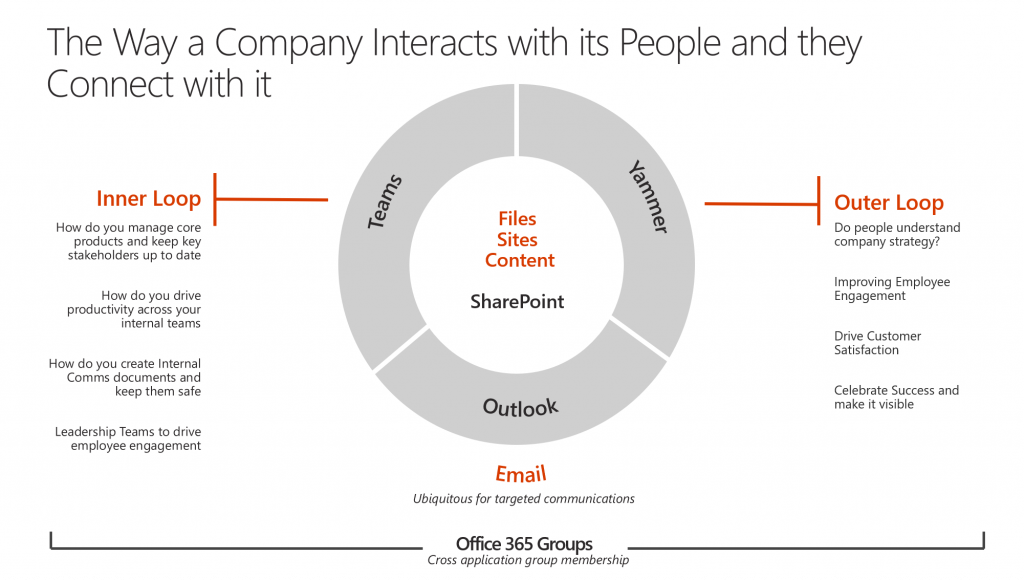
Internal communications: where should your conversations start?
The days of pinning a notice up in the staff canteen and hoping all employees read it are long, long gone. But could company-wide emails be going down the same route? The workplace is changing beyond recognition at the moment: it consists of more generations than ever before; it’s almost entirely digital with evolving security requirements; and it’s accountable for more and more expectations.
You’re responsible for a growing amount of sensitive information, both about your business and your customers. And given the turbulent times we’re living in – where there’s been a 300% increase in user attacks in the last year – it’s growing even more important to secure your platforms.
But what your employees want is changing too. With a multi-generational workforce, you need to offer employees platforms and tools they enjoy using. And sometimes, this can be at odds with the measures you need to take to protect your business.
At Microsoft, we have a universal toolkit for teamwork. The combination of Office 365’s enterprise-level security features, with a collaborative, chat-based hub, results in Microsoft Teams. We also have Yammer, and other pieces that combine give people a holistic toolset. But what should you use when? What conversations should you have on each? And how can you use them effectively and efficiently – and not get tied up in collaboration overload?
There are certain challenges you’re going to face in internal communications. You need to find a way for senior stakeholders to engage with employees to create a shared understanding of company goals – in a way that’s both secure and flexible. You need to find a platform that meets the preferences of a multi-generational workforce. For example, millennials want the freedom to work with directors and peers alike – not just within their hierarchical role.
All communications must be two-way, and now employees expect instant, fast messaging, rather than email. And you also need to consider what apps to use: some may work for some people and requirements, but not for others.
Don’t get stuck in a loop
If an organisation uses internal communication to tell people what to do, they’re never going to get the most or the best from employees. Instead, we should use it to create shared understanding and meaning; to connect employees with their purpose. And when we can do this, employees can work together to achieve their company’s goals. By telling stories about services, culture and products, organisations can engage and communicate with employees on a higher, more valuable level.
But it needs to be relevant. We can’t replace mass emails with mass instant messages. Instead, we should look to our inner loop and our outer loop. Your inner loop is a close-knit group, working together on a particular project or deliverable. Your outer loop sits further away from your core team, and may encompass the entire department, location or organisation. You’re unlikely to want a conversation about an element of an upcoming project with the entire department. But if you want new perspectives and thoughts, you might want to speak to more people.
As part of Office 365, you have access to two additional communications platforms: Microsoft Teams and Yammer. Both are designed with the inner loop and outer loop in mind, while Outlook sits beside both, remaining a ubiquitous tool for targeted communications.
Your inner loop requires in-depth and detailed collaboration across a range of documents. You need shared access to information tools like PowerBI and third-party integrations. You need to chat instantly, getting answers faster than if you email someone. You need to save and share documents, and have the ability to invite any relevant people into the conversation. You want to remove barriers, and give all team members an equal playing field, letting everyone come together to share ideas and feedback. With Microsoft Teams, you can:
- manage core products and services, and keep key stakeholders up to date
- improve productivity in your internal teams
- create internal communications documents and keep them safe
- manage workloads, with notifications and preferences to suit each user
- use leadership teams to drive employee engagement.
When it comes to your outer loop, you might not want or need the detailed collaboration and sharing associated with your inner loop. Instead, you want to pose questions to gather new insights and ideas. You want to reach a large group of people at once, and share links and news in a fast, unobtrusive way. With Yammer, you can:
- ensure that people understand your company strategy
- improve employee engagement
- drive customer satisfaction
- celebrate and promote success.
So, when you , you have a complete internal communications solution, encompassing both project-based teams and the entire company. Plus, as they’re part of the Microsoft solution, they work seamlessly with Outlook, Office 365 and SharePoint.
Our tools and solutions help you to start and maintain conversations between employees at all levels.
Keeping internal communications inside the business
The conversations you have within your team might be as inane as the daily lunch menu. But on the whole, they’re likely to be packed with sensitive information. Information you don’t want your competitors getting hold of. So, it’s vital that your internal communications solutions offer best practice on how to keep those conversations strictly within the business.
A lot of it comes down to your data residency, and your legal and compliance requirements. With Microsoft Teams you know exactly where your data is. It’s in our cloud, protected by robust, industry-leading security processes. So, you’ll have the right level of authentication in place when your employees are working away from the office. Plus, you can use Microsoft Teams as an audit log, as you have access to complete records on the system’s back-end. Microsoft Teams has the security, authentication and compliance you expect from Office 365. For example, if you use access controls or DLP to block sensitive customer information from being shared beyond a restricted set of employees, it applies on Microsoft Teams too.
At Microsoft, we’re leaders in collaboration. From Microsoft Teams and Yammer, to SharePoint and OneDrive, our tools connect your people, and help you share and store data.





